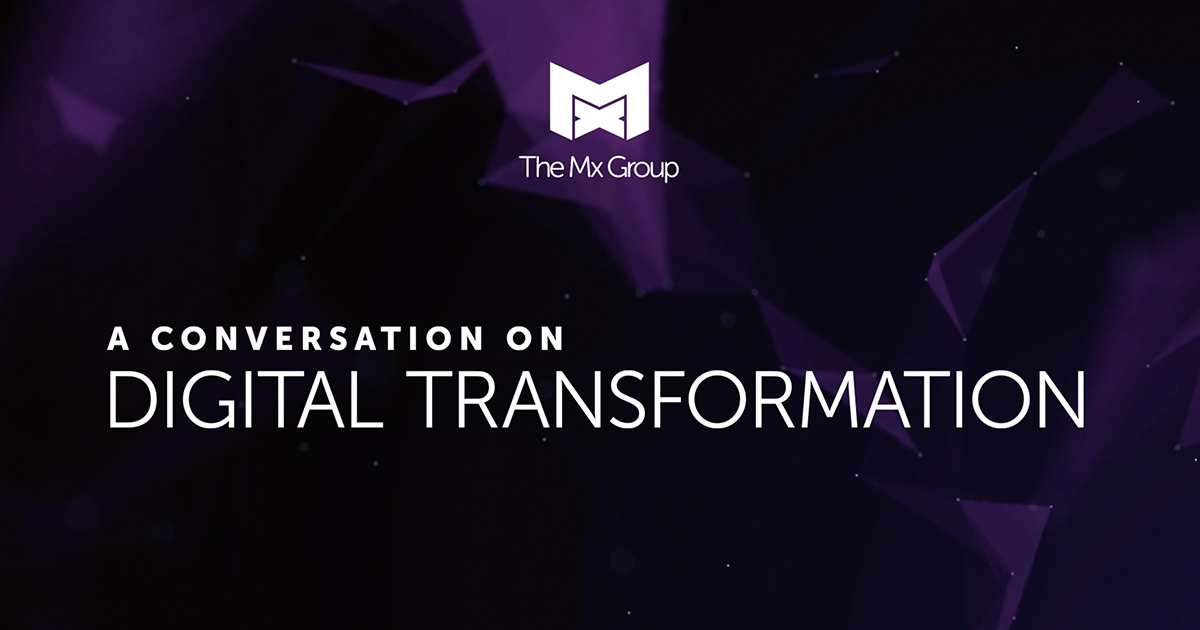10 Ways to Change Your Trajectory Through Digital Transformation

Share this story
The digital transformation discussion topic has dominated conversations over the past several years. Yet despite the buzz, B2B marketers haven’t uniformly adopted it. Some are well on their way, while others still have difficulty getting organizational buy-in. A 2018 McKinsey study revealed fewer than 24 percent of executives understand how their industries are being disrupted by digital. 2019 was certainly the year many of those executives deepened their understanding and drove at least the beginning of their digital transformation, but this finding still points to the importance of upskilling and aligning at the highest levels across the organization, including sales, marketing, customer success and IT.
And the urgency is mounting. The radical disruption happening outside our businesses is an opportunity for radical disruption inside as well. This isn’t the time for subtle shifts and skunkworks side projects. If you’re focused on driving growth and winning through the recovery, you need to change your trajectory completely and deliberately.
Hindsight is 2020
Coming into 2020, many top analysts were already predicting massive change in B2B marketing and sales. The gap between B2C and B2B buyer expectations had been narrowing for some time, driven by the increasing desire for a self-directed customer journey.
As Forrester noted at the end of last year: “Over the past decade, we’ve seen business buyers become increasingly self-reliant and self-directed. But we’re now seeing that buyers increasingly expect to be served — by both marketing and sales — with an experience of their choosing. And as our predictions reveal, we believe 2020 will be a pivotal year as buyers’ demand for a compelling experience increases and B2B marketers strive to own the moment.”
...we’re now seeing that buyers increasingly expect to be served — by both marketing and sales — with an experience of their choosing.
What Forrester didn’t predict was that COVID-19 would blur the lines between work and home so much that the gap would become almost nonexistent. Buyer behaviors are leaning even more heavily toward digital, and even the sales team has gone virtual. Simply put, market conditions and buyer preferences require a fundamentally different relationship between businesses and business buyers — a relationship that is unabashedly reliant on digital.
So no matter where you are in your digital transformation journey, it’s time to accelerate. Here are 10 ways to help you think about where to focus your efforts and how to rally your team about what really matters.
1. Own the moment
COVID-19 hurtled many organizations into crisis mode. But in the early days, there were also those reminding us to “never waste a crisis.” While no one should treat recent world events opportunistically, disruption can be a great opportunity to rethink, reshape and grow. In fact, 14% of companies were able to not only accelerate growth but also increase profitability during the last four recessions.
What did those companies do right? They acted early, took a long-term perspective, and focused on growth, not just cost-cutting. So use this as an opportunity to create a sense of urgency and drive your digital transformation.
2. Engage emerging influencers
Our recent survey of millennial B2B buyers found that 44% were the primary decision-makers for purchases of $10,000 or more. And 88% said the digital buying experience was important in vendor selection. This group is growing in influence, and all segments expect an exceptional digital experience.
3. Don’t depend on brand loyalty
The 2019 Industrial Buying Dynamics study by UPS noted that the increasing influence of millennials in the workplace ushers in a demographic of buyers that “don’t always have the tenure in a role to claim long-term relationships or deep loyalty.” So more and more B2B decision-makers don’t have the long-held brand preferences that may have helped legacy brands hold market share in the past. Millennials are more willing to switch vendors — placing value on things like the ease of online ordering and post-sales support in addition to price, quality and value. So your digital buying experience and customer support have to be up to the task, or you’re out.
4. Design a digital ecosystem around the customer experience
A recent survey found that 87% of B2B marketers feel B2B organizations need to be as focused on customer experience as their B2C counterparts.
Of course, the B2B customer experience is a lengthy topic all by itself. But suffice it to say that some experiences customers want are:
| LESS OF THIS | AND MORE OF THIS |
| Gated content | Relevant information |
| Forced sales interactions | Peer connections |
| Friction and blockers | Self-directed, digital transactions |
5. Digitize the sales experience too
A recent B2B pulse survey from McKinsey indicates B2B buyer preference for digital sales interactions is now twice that of traditional.
During the research phase, digital channels are now seen as more beneficial than traditional channels with the supplier’s website and live chat topping the list of buyers’ preferences.
And while many B2B sales transactions may be too complex to be 100% self-service, buyers still crave the ability to research, specify and compare autonomously. They value a mix of online and offline, self-service and directed. B2C companies have long focused on creating frictionless experiences to avoid cart abandonment. But now, B2B teams must acknowledge that buyers will move on if they can’t get the self-directed, digital buying experience they expect.
6. Embrace e-commerce
B2B trend reports have been signaling the rise of e-commerce for a long time. Prior to COVID-19, Forrester reported that e-commerce is projected to account for 17% of all B2B sales in the U.S. by 2023.
Complexities such as multifaceted product configuration and a plethora of pricing models were keeping some e-commerce initiatives sidelined while businesses focused on more tried and true sales channels. But if you weren’t taking notice of your buyers’ desire for e-commerce before, the likelihood that their expectations are increasing in light of the pandemic can’t be denied. E-commerce revenue is up more than 20% since the onset of COVID-19 among companies that sell online. Not a good sign for businesses that aren’t even on the road toward offering some type of digital buying option.
7. Make mobile a priority
We know, we know. We all have smartphones in our pockets and EVERYONE knows mobile experiences are important, right? Well, yes. But it can also be tempting to fall into the trap of thinking B2B is still very anchored to the desktop. “Sure, some of what we do should work on mobile, but maybe it doesn’t need to be a core part of our strategy…” Think again.
Boston Consulting Group reports that 80% of B2B buyers are using mobile at work, and more than 60% report that mobile played a significant role in a recent purchase. And mobile can accelerate time to purchase by 20% by increasing efficiency in decision-making and enhancing team collaboration, particularly in more complex purchases.
8. Be relevant
By now it should be clear that buyers are favoring their own self-guided, digitally enabled journeys. So your website and your content need to replace many of the human interactions that used to happen at face-to-face events and in-person sales meetings. The content struggle is real, but the organizations that get it right are pulling ahead by getting basic marketing right. That is, the right message, for the right person, at the right time. 83% of top-performing content marketers say their organization provides customers with optimal experiences across their engagement journey. And 93% of the most successful content marketers say their organization prioritizes delivering relevant content when and where a person is most likely to see it.
Now of course, digital transformation isn’t going to create the content for you. But the time you save with technology that does a more efficient job for targeting, segmentation, analytics, etc. can be reclaimed so you can prioritize creating content that informs, engages and inspires action.
9. Face the data dilemma
Whether it’s mapping intent across the customer journey, leveraging behaviors for tailored nurture, serving up the right product recommendations in e-commerce, or even understanding what’s working about your GTM strategy, data holds the key. Succeeding requires a careful orchestration of technology integrations to create a complete customer data picture. But silos are holding marketers back. 27% of B2B marketers cited siloed or inaccessible customer data as their company’s biggest obstacle to succeeding at data-driven marketing.
While it’s easy to understand why these conditions exist, hopefully you can use this unprecedented moment as a catalyst to get IT, sales and marketing on the same page and united in solving the problem.
10. Accept it’s here to stay
The global pandemic necessitated a shift to virtual selling. It was simply unavoidable as states enacted stay-at-home orders and non-essential workers needed to work remotely. In fact, 96% of B2B companies shifted their go-to-market model during COVID-19. But as restrictions are relaxed and offices are allowed to re-open, will selling return to its previous shape? It doesn’t look like it.
Sentiment about the efficacy of new models is on the rise. 65% said the new model is just as effective or more than before (up from 54% the previous month). And 80% of companies said they are very or somewhat likely to sustain these shifts 12+ months after COVID-19.
So with virtual sales here to stay, at least in some shape, it’s incumbent on marketing teams to support the transition and help the sales team level up. We recently spoke with B2B marketing leaders about how to help sales teams in a digital transformation roundtable.
How can digital transformation take you beyond vendor to partner?
It was always going to be a year of change, even if the drivers are different than we expected. But you can make this year a pivotal, productive and effective year of digital transformation, wherever you were at the dawn of 2020 and wherever you are now. It’s not too late, and we’re always here for support.


